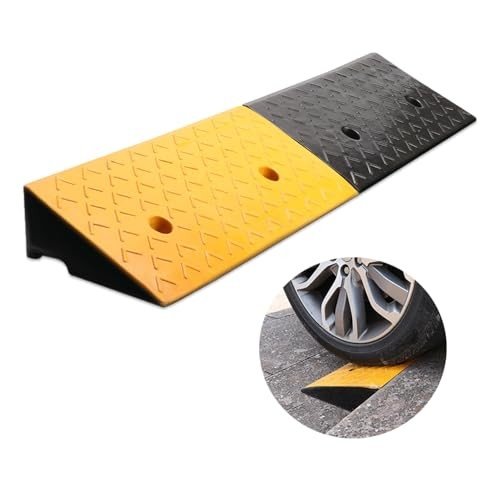This company has no active jobs
0 Review
Rate This Company ( No reviews yet )
About Company
A Step-By-Step Guide To Selecting Your Mobility Ramps
Mobility Ramps for Homes: Enhancing Accessibility and Independence
As society continues to progress towards inclusivity and accessibility, mobility ramps have ended up being essential fixtures in many homes. These ramps not only offer a means of entry for individuals with mobility difficulties but likewise promote self-reliance, security, and benefit. This article explores the different elements of mobility ramps for homes, directing property owners through their types, benefits, installation considerations, maintenance, and regularly asked questions.
Understanding Mobility Ramps
Mobility ramps are designed to facilitate the movement of people using wheelchairs, scooters, or other mobility aids. They enable much easier access to homes, garages, and exit points without the requirement for considerable physical exertion or support.
Key Benefits of Mobility Ramps
-
Self-reliance: Mobility ramps empower people to get in and leave their homes without depending on support, cultivating a sense of independence.
-
Security: A correct ramp lowers the risk of falls and injuries that can happen when maneuvering stairs.
-
Adaptability: These ramps can be constructed for various environments and can be temporary or irreversible options.
-
Home Value: Installing a mobility ramp can increase the overall value of a home as it promotes inclusivity.
-
Ease of Use: Designed for a variety of mobility levels, ramps accommodate wheelchairs, walkers, and individuals with restricted mobility.
Kinds Of Mobility Ramps
Choosing the ideal mobility ramp depends upon specific requirements, physical area, and budget plan. Here’s a detailed contrast of typical kinds of mobility ramps:
| Ramp Type | Description | Pros | Cons |
|---|---|---|---|
| Portable Ramps | Lightweight, quickly portable ramps, often made from aluminum. | Easy to store and move, perfect for temporary requirements. | Minimal weight capacity, may not be ideal for irreversible use. |
| Limit Ramps | Brief ramps developed to bridge entryways or doorways. | Easy installation, beneficial for small height distinctions. | Not perfect for larger stairs or steep inclines. |
| Irreversible Ramps | Developed from wood, aluminum, or concrete, these ramps are meant for long-lasting usage. | Durable and resilient, adjustable to different lengths and heights. | More pricey and may need planning/building authorizations. |
| Folding Ramps | Ramps that can fold for easy transport or storage. | Storable and good for several uses. | Possibly less steady than permanent choices. |
| Modular Ramps | Pre-fabricated areas that can be put together to produce a custom ramp design. | Easy to install and reorganize, versatile to various spaces. | May have a higher in advance expense compared to other ramps. |
Setup Considerations
Prior to including a mobility ramps for Home ramp to a home, numerous elements need to be thought about to ensure ideal performance and safety:
-
Space Assessment: Measure the location where the ramp will be set up, representing existing structures and paths.
-
Building regulations: Familiarize yourself with regional building regulations and regulations to make sure compliance, especially for permanent ramps.
-
Slope Ratio: The Americans with Disabilities Act (ADA) suggests a slope ratio of 1:12 for wheelchairs. This suggests for each inch of vertical rise, there must be at least 12 inches of ramp run.
-
Product Selection: Choose a product that is long lasting and weather-resistant to lengthen the ramp’s life expectancy.
-
Surface area Texture: Ensure the ramp has a non-slip surface area to reduce the risk of mishaps, particularly in severe weather condition.
-
Handrails: Consider installing handrails for extra assistance, specifically on longer ramps or those with steeper inclines.
Upkeep of Mobility Ramps
Preserving mobility ramps is important for guaranteeing safety and longevity. Here are some pointers:
-
Regular Inspections: Inspect the ramp regularly for damage, wear, or loose bolts that may affect stability.
-
Cleaning up: Keep the ramp clear of debris, such as leaves and snow, to prevent slipping dangers.
-
Surface Repair: Address any surface problems, such as splitting or splintering, in wooden ramps promptly.
-
Repaint if Necessary: For metal ramps, repainting can help prevent rust and wear and tear.
-
Check Handrails: Ensure handrails are securely secured and can support weight when needed.
Often Asked Questions (FAQ)
1. Do I need a license to install a mobility ramp?
Yes, depending on regional regulations, a license may be needed, especially for irreversible ramps. It’s recommended to inspect with your regional building authority.
2. How much does a mobility ramp cost?
The cost of mobility ramps varies widely based on the type, materials, and installation requirements. Portable ramps can begin at a few hundred dollars, while permanent ramps can range from ₤ 1,000 to ₤ 5,000 or more.
3. Can I set up a ramp myself?
While some portable ramps are easy to set up, irreversible ramps typically need professional setup to make sure security and compliance with building regulations.
4. How do I determine the best slope for my ramp?
Follow the ADA guidelines of a 1:12 slope ratio for wheelchairs. Additionally, think about the specific needs of the user and the area available.
5. What products are best for outside ramps?
Aluminum, dealt with wood, and concrete are popular options for outdoor ramps due to their toughness and resistance to weather.
6. Exist insurance benefits for installing mobility ramps?
Some insurance policies may cover mobility modifications, including ramps. Always talk to your insurance provider for coverage information.
In conclusion, mobility ramps represent a crucial component of home accessibility, fostering self-reliance, security, and inclusiveness. By comprehending the different types offered, thinking about setup requirements, keeping them successfully, and looking for responses to common concerns, house owners can guarantee a helpful environment for those with mobility obstacles. Making the ideal choices concerning mobility ramps can substantially improve the quality of life for individuals and their households.



